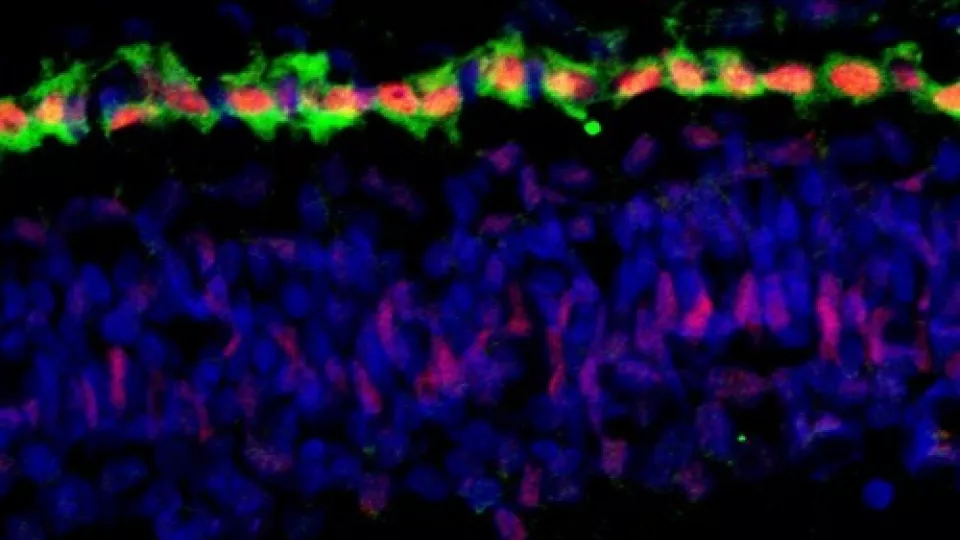
What Makes a Cell Turn Cancerous?

Retinoblastoma is a tumor of the retina that generally affects children under 5 years of age and accounts for approximately 4% of childhood cancers. If not diagnosed early, retinoblastoma may result in loss of one or both eyes and can be fatal. David Cobrinik, MD, PhD, of the Saban Research Institute of Children’s Hospital Los Angeles, has made key discoveries to advance our understanding of this cancer. His team showed that retinoblastoma arises from abnormal proliferation of a cell type called cones in the retina, the light-sensing layer behind the eye. A mutation in a tumor-suppressing gene called RB effectively releases a brake on cell growth, causing cones to grow out of control and form a tumor. Children who inherit a mutated form of RB have more than a 95% chance of getting retinoblastoma. Given this strong correlation, an understanding of how RB mutations affect cone cells could lead scientists towards an intervention in the disease.
Dr. Cobrinik received a $1.6M grant from the National Cancer Institute of the NIH to study what causes cone cells to proliferate and form tumors. Though the genetic mutation is identified, we still must understand how RB mutation affects cone cells. What makes a cell turn cancerous? Why are cone cells vulnerable to this mutation? To answer these questions, Dr. Cobrinik explains, we must understand the normal function of RB and what it is doing to block tumor formation in healthy individuals. “If we can understand this,” Dr. Cobrinik says, “we might have the opportunity to prevent the tumor process.” While his research is focused on retinoblastoma, understanding how tumor-suppressing genes affect healthy cells could open up avenues for treatment in many cancer types.
About Children's Hospital Los Angeles
Children's Hospital Los Angeles has been ranked the top children's hospital in California and sixth in the nation for clinical excellence by the prestigious U.S. News & World Report Honor Roll. The Saban Research Institute at CHLA is one of the largest and most productive pediatric research facilities in the United States. CHLA also is one of America's premier teaching hospitals through its affiliation since 1932 with the Keck School of Medicine of the University of Southern California. For more, visit CHLA.org, the child health blog and the research blog.


